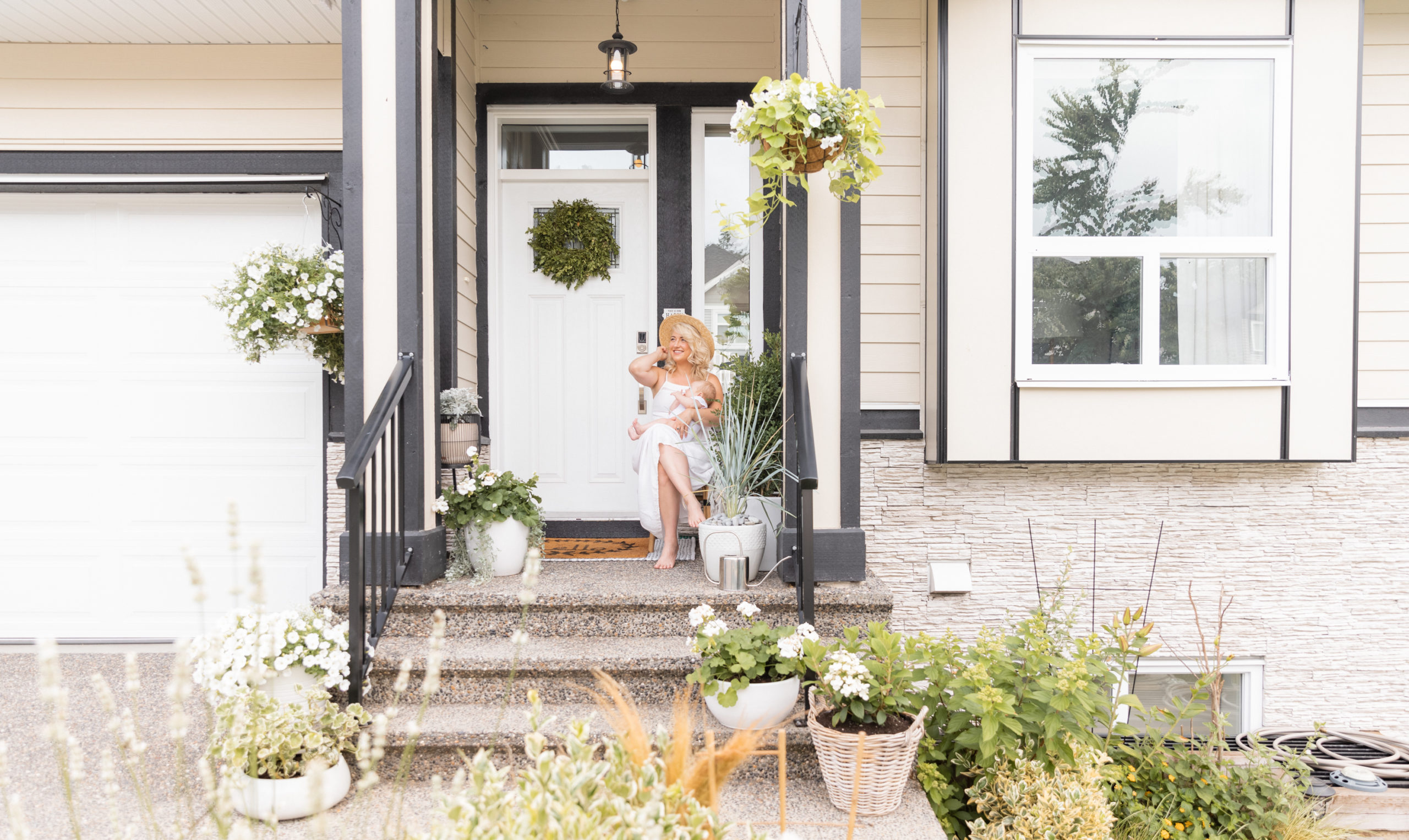

My Gardening Tips for Winter from the Experts!
Natalie Langston
BY:
Q&A WITH THE GARDENING PROS (unfortunately no.. I don’t mean me)
Hey guys!! If you follow along with me over on Instagram stories, you’ll know that Gary and I completely re-did our front planters over the summer and I’m SO happy with how they turned out!! I’ll admit that I was a bit worried about transplanting some of our plants as they were rooted quite nicely, but we wanted to change it up and the plants that were in there originally didn’t quite match our colour scheme. I’m not going to lie we left it a little late this year and didn’t get started until May. However, I think that might have worked out in our favour as our plants have maintained their shape and liveliness well into the fall season. But now with the first frost come and gone we need to start transitioning our garden for the winter season. Thanks to the lovely people who reached out with questions, and who shared their tips and tricks by the way.
While I fancy myself a master after working so closely with Garden Works and Brad’s Yard Care, I thought I’d leave the tips to the real experts. I sat down with my friend and true gardening guru Aleks at Garden Works to get to the bottom of some of your tricky FAQ’s and we also included some tricks from Brad in regards to your lawn questions!! These questions are not only to help with going into fall and winter but also if you are thinking about what you’d like to plant next year and your spring gardening plan of attack.
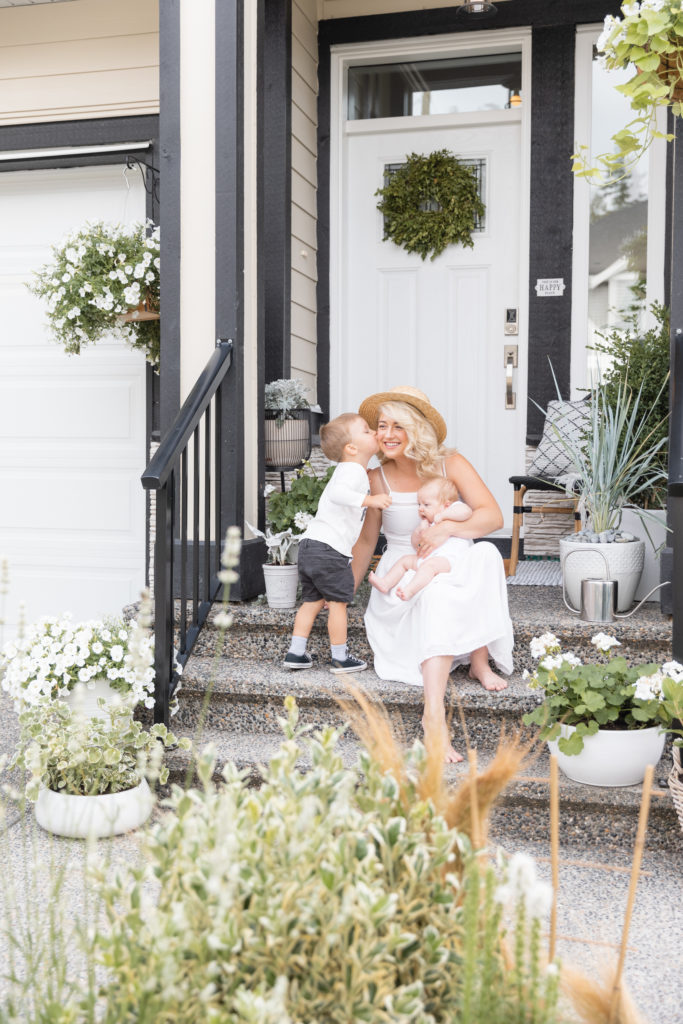
FAQ’s to help protect your winter garden and lawn and plant and plan for your spring garden. Here we go!
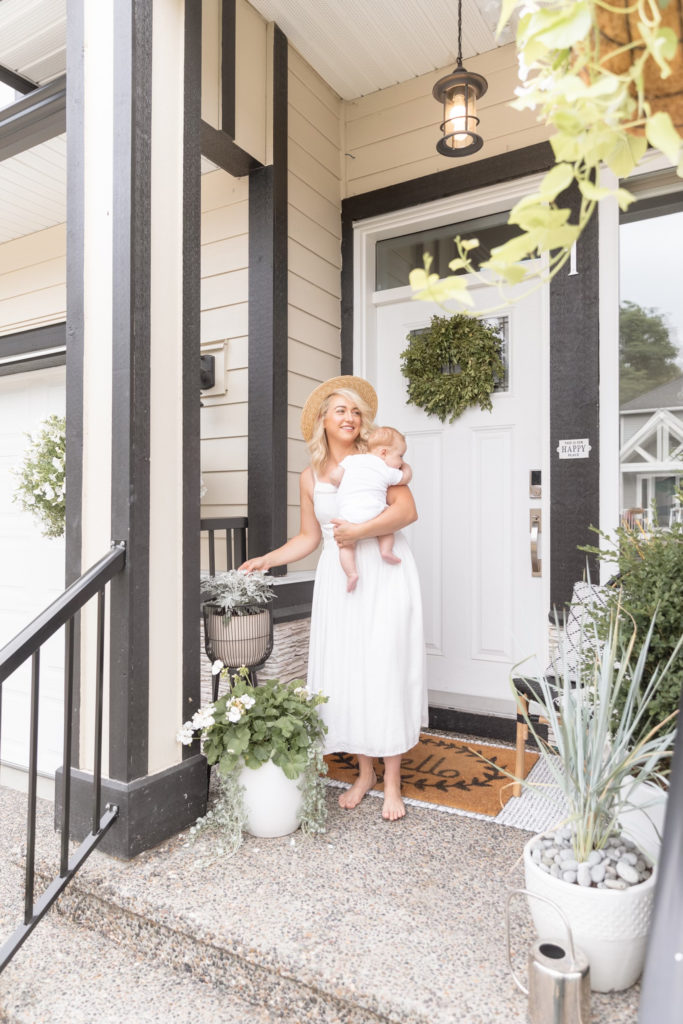
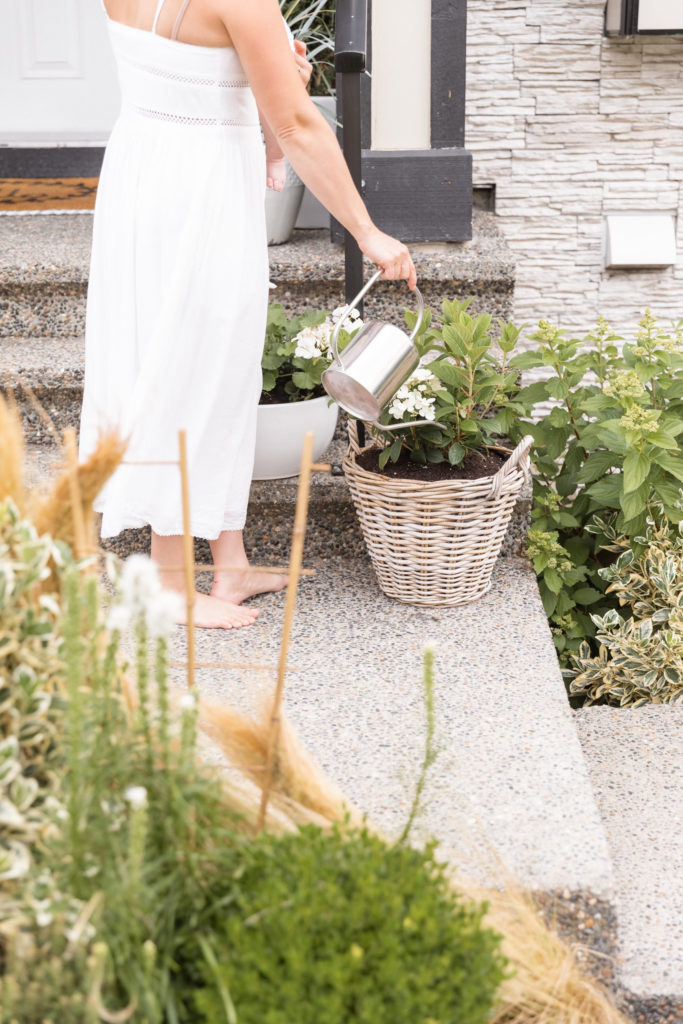
Q. HOW DO YOU MAINTAIN YOUR GARDEN AND PLANTER GOING INTO THE FALL/WINTER SEASON?
A. Watering is key. When watering, be sure to water deeply to get the water deep down into the roots. A layer of mulch over the moist soil will help lock in moisture for longer as well. For hanging baskets, deadhead your spent blooms to encourage new blooms throughout the season. Hanging baskets will require more regular watering especially on hot days (be sure to check them daily to prevent them from drying out).
Q. HOW DID WE CHOOSE THE RIGHT PLANTS FOR OUR SPACE?
A. A lot of this depends on your light conditions as well as soil. For shady spots you will need to choose shade loving plants and vice versa. Keep in mind the spread & height of many perennial plants, while they may look small to begin with they can grow very large. Planting taller plants in the back and shorter, more low-lying plants in the front creates more visual impact and ensures shorter plants can still get enough sunlight without getting covered by taller plants.
Q. HOW DO YOU POT, AND CHOOSE THE RIGHT PLANTS FOR YOUR PLANTER?
A. Start with good container soil followed by a slow release fertilizer that will keep your planters fed & happy. Pick a colour scheme, do you want vibrant and colourful? Clean & simple neutrals, dark & bold, monochrome etc. “Thrillers” are generally the showy tall accents toward the back of a planter. Look at the plant heights you are selecting and place the tallest in the back.
Fillers will fill in the space in the middle of the planter. Combining foliage and blooms creates more visual impact. “Spillers” are plants that will trail down the front end of your planters. Again these can be blooming or foliage options (or both).
**Thrillers, Spillers and Fillers… okay now tell me gardening isn’t fun!!
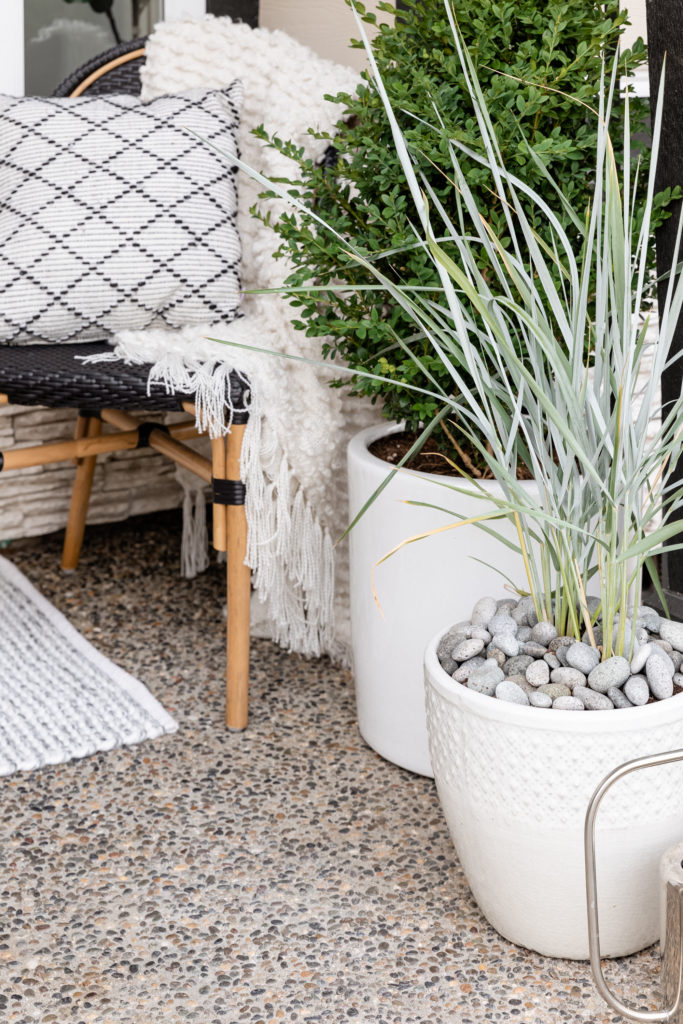
Q. WHAT PLANTS LOOK GOOD ALL YEAR ROUND?
A. If you want colour all year round, you will need to look for Evergreens. Junipers, Boxwoods, Camelias, cedars etc. (Boxwoods are what we planted in between the euphorbia).
Q. HOW DO YOU MAINTAIN YOUR ANNUALS + UPKEEP PERENNIALS?
A. Mulch around your plants to lock in moisture during the dog days of summer, more mulch may be required in the fall to help keep the roots protected from the cold in the winter.
For your annuals, once they are done blooming and starting to die back, you can pull them from the ground. You can replace them with more fall annuals like ornamental kales, mums, etc for interest in your garden into the fall.
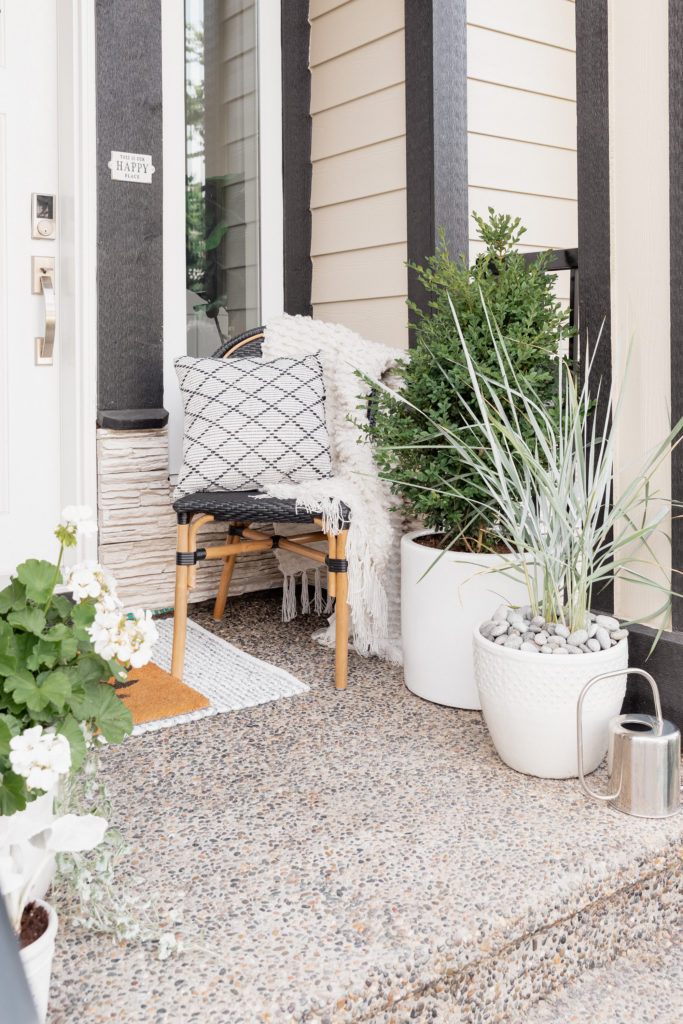
Q. TIPS FOR GARDENING IN SMALL SPACES?
A. Many things grow well in pots and planters, you can easily create a beautiful look in pots. Grouping pots in odd numbers is also a great visual trick. Choose pots that are from the same style or colour group and pick different heights, this will give more depth to your planting and pick your plants in the same scheme to match the rest of the group. Many veggies can also grow in pots, radishes, carrots, lettuces, tomatoes & even blueberries can all be grown in pots as long as they are large enough.
Q. ANY TIPS ON INDOOR PLANTS?
A. Pick the right plant for your light levels, if you do not have a lot of bright, filtered light in your home, avoid houseplants that require lots of light. Generally anywhere can be a suitable spot for a plant in your home unless there are zero windows or light sources. Some plants like sansevieria (snake plants) grow very well in low light & their upright growth structure makes them suitable for small spaces (they also require little water). For most plants, keeping their leaves free from dust is also important to keep them happy (especially for plants with large leaves like Fiddle Leaf Figs & Monsteras). Use a damp cloth to wipe the leaves or you can place your plant in the shower to give them a good thorough rinse. For some plants like Ferns, while they tolerate lower light, they like to stay moist. Ensuring their soil is always evenly moist is important and a mister bottle is great for spraying them every few days to keep moisture levels up. Bathrooms can be great spots for Ferns due to the higher humidity in those rooms.
Last but not least, we reached out to our friend Brad at Brad’s Yard Care for some last minute lawn-tips. Brad installed our new grass, which Gary maintains and waters daily and fertilizes once a month.
- Spring
- March to June – cut lawn short , power rake all lawn areas, core aeration, top dress (turf mix soil, 50% sand), overseed and spring fertilize.
- Summer
- July to September – water lawn as much as possible. Summer fertilize each month.
- Early Fall
- September to October – power rake , core aeration, top dress (turf mix soil, 50% sand), overseed and fall fertilize.
- Winter
- November to February – winter fertilize early winter.
Brad installed our new grass, which Gary maintained over the summer by watering daily and fertilizing once a month. He will fertilize again this weekend and then again in February.
Okay friends, even though I fancy myself a gardening expert.. I was totally lost with some of those questions. A million thanks to Garden Works and Brad for helping the other gardening-lovers with some expert feedback.
Okay flower-lovers, can’t wait to hear about what else makes your garden tick.
Until then,

Photography by The Hill Creative